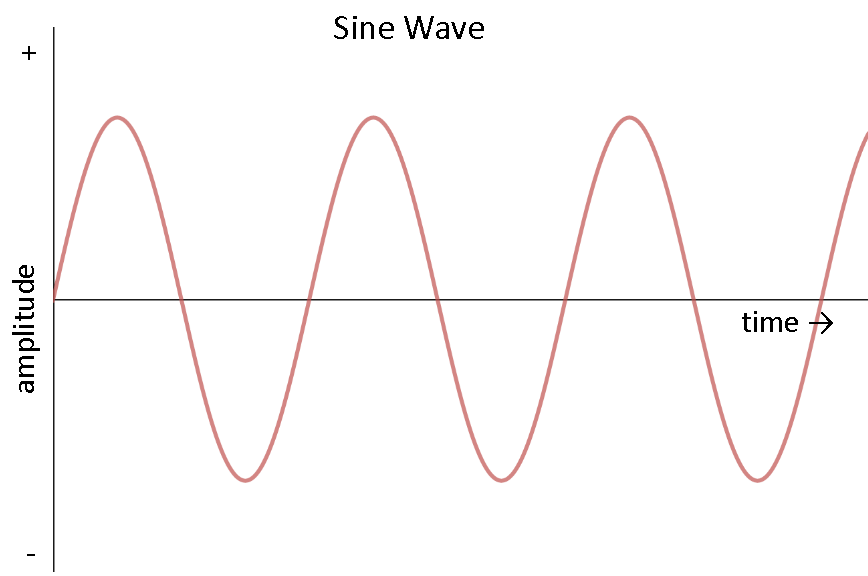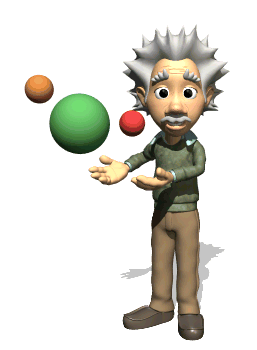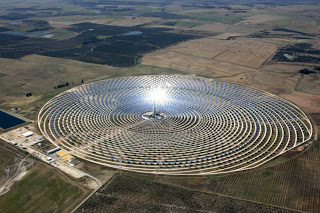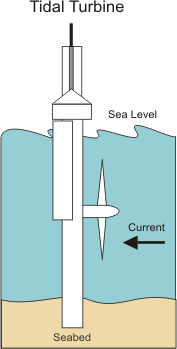DIRECT CURRENT.
Is a direct current when the electros always flow in the same direction with the same current. The value doesnt change over time.
ALTERNATING CURRENT.
In alternating current the value changes 50 times per second and the electrons can go in differents directions. An example is a electrical socket.
 ➦First, the current is in 0 V and increases to 325 V.
➦Then, the current decreases from 325 V to 0 V.
➦After, the current still decreasing from 0 V to -325 V.
➦Finally, the current increases to 0 V.
This process is repeated 50 times every second. Each variation is an electric signal and is an alternating signal when it alternates between positive and negative values.
THE EFFICIENCY OF ALTERNATING CURRENT.
The average power of alternating current is the power that a direct current should have in order to produce the same electrical effect.
➦First, the current is in 0 V and increases to 325 V.
➦Then, the current decreases from 325 V to 0 V.
➦After, the current still decreasing from 0 V to -325 V.
➦Finally, the current increases to 0 V.
This process is repeated 50 times every second. Each variation is an electric signal and is an alternating signal when it alternates between positive and negative values.
THE EFFICIENCY OF ALTERNATING CURRENT.
The average power of alternating current is the power that a direct current should have in order to produce the same electrical effect.
TRASFORMERS.
Alternating current can be increased or decreased by a transformer. Transformers are two windins made of copper wire. The value that we have produce in one of them depend on the number of times that the copper wire has been wrapped around each winding: V1/V2= n1/n2
SERIES CIRCUITS.
In a series circuit the output of one element provide the input for the next element. When we want know the total resistance of a series circuit, we have to do this operation: R= R1+R2+R3.
Other example can be a series of generators that the sum of all the resitance values is the total resistance: V= V1+V2+V3.
PARALLEL CIRCUIT.
In a parallel circuit the output element share the same tan the input element. The potential difference is the same for eah element,but the current in each branch is different:
1/R= 1/R1+ 1/R2 + 1/R3....
If two equal batteries are connected in parallel, the voltage will not increase, but the total consumption of energy will be shared between the batteries.
COMBINATION CIRCUIT.
These type of electric circuit has elements connected in series and other elements connected in parallel. The current remains constant between elements that are connected in series and the voltage remains the same between elemens that are connected in parallel. For analyse their , first we calculate the current from each power source .
In this unit we are going to learn to design electric and electronic circuits, use their correct symbols and basic instruments and units of measurement for electricity.
What is an electric circuit?
It is a pathway for the flow of electrons that consists of following parts connected by wires. In an electric circuit is throwing a continuous flow of electrons called electric current. These are its parts:
 ⚫ Loads are devices that transform electric energy into other types that we can use. For example: light bulbs, motors, resistors and bells
⚫ Switching devices direct and interrupt the flow of electric current. For example:
⚫ Loads are devices that transform electric energy into other types that we can use. For example: light bulbs, motors, resistors and bells
⚫ Switching devices direct and interrupt the flow of electric current. For example:
There is the list of the most common symbols:

Power stations use products that affect the environment, or example hey require the construction of new buildings and other infrastructure.
ENVIRONMENTAL IMPACT ASSESSMENT.
Any proposed new technological project include an environmental impact assessment that are all of the ecological changes that the project could cause in the local área and there also be in the economical and social repercussions of the project.
⤇Wind: It use renewable energy. It has visual and acoustic impacts and the output is low ,strong winds can cause accidents. However, wind farms are clean and help to replace our dependency on fossil fuels.
⤇Hydroelectric: It use renewable energy. It changes the flow of rivers and floods large áreas.
Hydroelectric power stations could generate disasters and dangers to plants and animals. Their output is efficient and high.
⤇Solar: It use renewable energy. These power stations take up a lot of land and installations are expensive. There are risks of burns and blindness, and their output is low. However it's clean and helps to replace our dependency on fossil fuels.
⤇Marine: It use renewable energy. The construcction of these power stations are expensive and affects the environment and the output is low. They are clean and help to replace our dependancy on fossil fuels.
⤇Biomass: It use renewable energy. Their technology is beneficial when it is used properly but it requires an excessive of natural resources. They replace our dependancy on fossil fuels and waste products that go to landfill sites.
There are some power stations that use renewable energy for reduce our dependance of fossil fuels that cause many problems in our environment. These power stations generate less energy than the others but they have many advantages:
○They produce less pollution than convetional power stations.
○They have unlimited resources.
○We dont need import so much fuels.
○They are very cheap.
WIND FARMS.
These power stations use the kinetic energy of the wind to produce energy. Wind farms work with a tower, and in the tower a turbine turns when the wind blows.
They must be installed in locations where the wind is strong. The efficiency depends on two factors:
∎The location of the power stations.
∎The number of turbines that are installed.


Wind farms are very cheap in comparaison with other power stations, and they are a totally clean source of energy. The total output of a wind farm depends on the number and size of the turbines.
HYDROELECTRIC POWER STATIONS.
These power stations use the energy of falling wáter to produce energy. Hydroelectric stations work with a recevoir, that acumulates wáter behind a high dam. The kinetic energy produced moves the blades of turbines, and the generator connected in the turbines produce energy. There are two types of hydroelectric power stations:
➝ Conventional hydroelectric power stations: The wáter flows from the recevoir trough a conduit where the wáter is in high pression. Then it flows out into a river.


➝ Pumped-storage hydroelectic stations: The wáter flows to a second recevoir. Then is pumped back to a higher recevoir. These stations are installed where there isnt enough rain to keep the upper recevoir full.
 SOLAR POWER STATIONS.
These power stations use energy from rails of sun to generate energy. There are two types of solar power stations:
➦ Solar termal stations; They can use sunlight in two ways:
SOLAR POWER STATIONS.
These power stations use energy from rails of sun to generate energy. There are two types of solar power stations:
➦ Solar termal stations; They can use sunlight in two ways:
 □ They can absorb sunlight in order to produce heat with solar collectors
□ They can reflect and concéntrate sunlight in one place with heliostats.
In both ways the water is heated to produce steam, that turns the rotor of a generator , which produces electricity.
➦ Photovoltaic stations; They work with panels ,that contains many photovoltaic cells, and covert sunlight directly into electricity. Small power installations are use for homes and rural áreas, and they are often istalled in the roof. Excess power is stored in batteries or accumulators.
□ They can absorb sunlight in order to produce heat with solar collectors
□ They can reflect and concéntrate sunlight in one place with heliostats.
In both ways the water is heated to produce steam, that turns the rotor of a generator , which produces electricity.
➦ Photovoltaic stations; They work with panels ,that contains many photovoltaic cells, and covert sunlight directly into electricity. Small power installations are use for homes and rural áreas, and they are often istalled in the roof. Excess power is stored in batteries or accumulators.
 BIOMASS POWER STATIONS.
Biomass is any organic thing that is produced by natural processes.
There are many types o biomass that we can use to produce energy, but in a biomass power station we use fuel produced by biomass. The steam produced from burn the biomass moves a turbine that is connected to a generator.
BIOMASS POWER STATIONS.
Biomass is any organic thing that is produced by natural processes.
There are many types o biomass that we can use to produce energy, but in a biomass power station we use fuel produced by biomass. The steam produced from burn the biomass moves a turbine that is connected to a generator.
 Some adavantages of these power stations are that they use waste materials that would normally end up in landfill sites and they produce less pollution than conventionl thermal power stations.
MARINE POWER STATIONS.
These power stations use the movement of ocean water to produce electricity. However ,they are very expensive and not very efficient. There are various types:
∎ Tidal power stations, that use the energy of tides.
∎ Wave power stations, which use the energy of waves.
∎ Ocean termal conversión stations, that use the difference in temperature between the ocean's surface and deeper áreas to produce energy.
Some adavantages of these power stations are that they use waste materials that would normally end up in landfill sites and they produce less pollution than conventionl thermal power stations.
MARINE POWER STATIONS.
These power stations use the movement of ocean water to produce electricity. However ,they are very expensive and not very efficient. There are various types:
∎ Tidal power stations, that use the energy of tides.
∎ Wave power stations, which use the energy of waves.
∎ Ocean termal conversión stations, that use the difference in temperature between the ocean's surface and deeper áreas to produce energy.
GEOTHERMAL POWER STATIONS.
These power stations use natural heat from the Earth's surface as hot water, steam and hot gases. They can be use in two ways:
⏺ It can be used directly to provide hot water for heating and industrial uses.
⏺ It can be used indirectly to drive generators and produce electricity.
There are two types: thermal power stations and nuclear power stations.
THERMAL POWER STATIONS THAT USE FOSSIL FUELS.
This type of power stations use fossil fuels for generate thermal energy, for after convert the thermal energy into mechanical energy.
Thermal power stations works with coal, oil and natural gas that heat wáter in a boiler. In the boiler turns a turbine connected to the rotor of a generator. The energy produced by the generator is transported by a network of high voltage power lines. The steam goes to a condenser, where it cools and becomes liquid wáter. Finally, the water is pumped back to the boiler.
Combined-cycle power stations.
In cogeneration power stations, electricity is generated in two systems. The first, burns natural gas with compressed air, and then it produces superheated gases, which turn a turbine to generate electricity.
 The second uses the previous hot gases and uses them to produce steam in a heat recover boiler. Finally the steam turns a turbine to generate more electricity. This are the reasons because of combined-cycle stations are more efficient that the single.
The second uses the previous hot gases and uses them to produce steam in a heat recover boiler. Finally the steam turns a turbine to generate more electricity. This are the reasons because of combined-cycle stations are more efficient that the single.

NUCLEAR POWER STATIONS.
This type of power stations use nuclear reactors, that uses radioactive material (specially isotopes of uranium), to produce heat.

Nuclear power stations produce a lot of energy that we can sold at a profit, but, in these power stations happens many accidents and storage of radioactive waste.
It is a form of energy that is transported by an electrical current. Electricity is the most useful in the world for two reasons:
⤷It can be transformed into other types of energy so better than others.
⤷It can be transported over long distances cheapest and more efficient.
ELECTRIC POWER STATIONS.
A power station is a place when energy from natural resources is transfromed in the energy that we may use. Depends of the energy we will generate , recives a name or another.
How the electricity is generated?

If we want transform the energy into electricity, we use generators and if generators are used in power stations ,are called alternators. An alternator is make up by a stator and a rotor. The rotor has an even numbers of coils that receive direct current. They produce an electromagnetic field . A turbine turns the axis of the rotor and generate electric current. This system is used at all power stations except for photovoltaic stations.
THE TRANSPORTATION AND DISTRIBUTION OF ELECTRICITY.
Power stations, usually, are place in zones far than the áreas where we use the electricity for safety reasons, for need space or for geographical features.
Electrical energy cannot be stored. There re many steps in the progress of transportation of energy:
1 Raising the voltage: the voltage is raised ,by transformers to high voltajes, because the electricity must go over large distances.
2 High voltage lines: the routes that the towers where are intalled the lines are carefully planned.
3 Reducing the voltage: The substations ,which are installed between the high voltage lines and final consumers, use Transformers to reduce the power to lower voltages.
4 Finally the power is distributed to buildings, industries and public installations. Te electric lines are installed in posts or underground. The voltage is reduced, depending on the final cosumer.






































